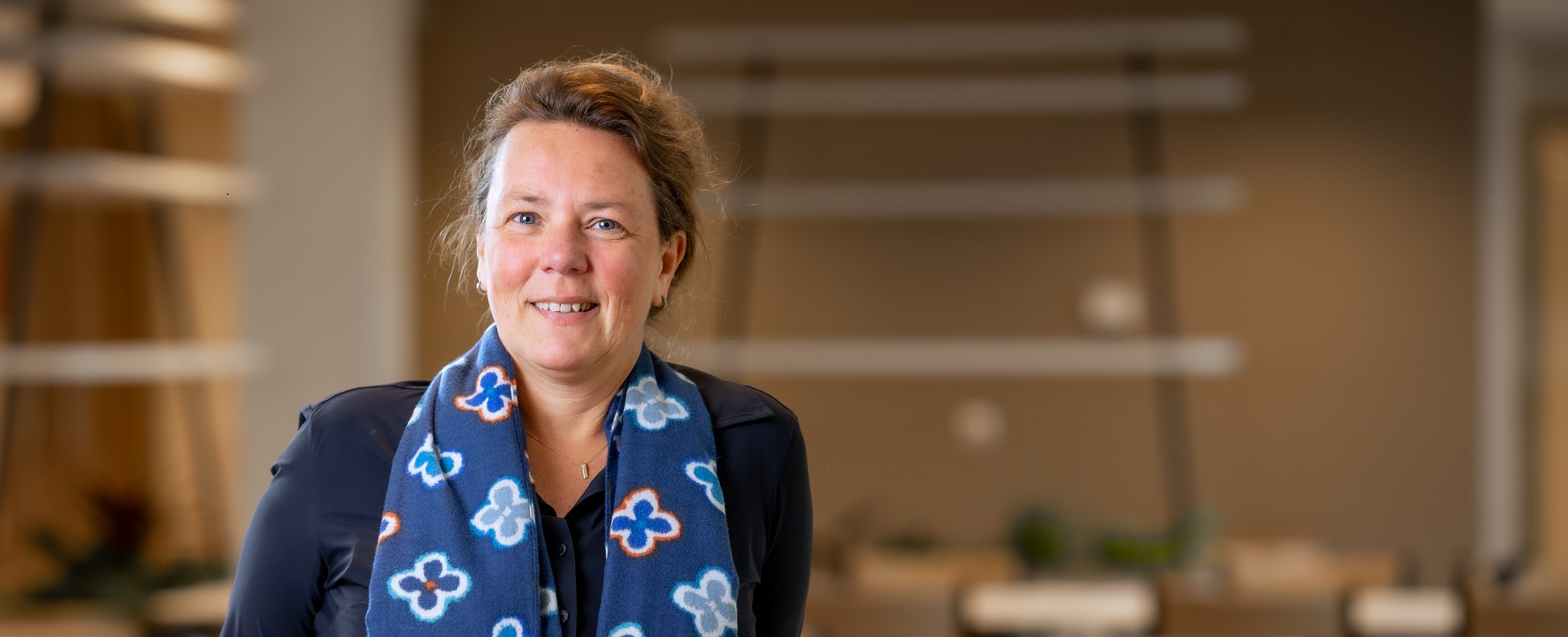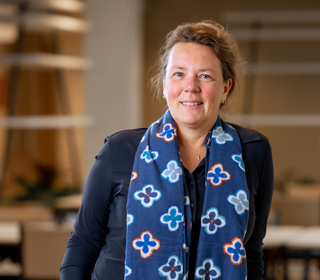Mariëlle Teesseling and Paula Morssink on the new building for Magentazorg Rehabilitation Centre
‘Being able to work in this building feels like a gift’
Construction of the green landscape is ongoing, but director Mariëlle Teesseling and coordinating nurse Paula Morssink take that for granted: “It’s only since starting to work in the new building that we realize just how outdated the old building was."
The recuperation process of the 82 patients in the new Magentazorg rehabilitation centre in Oudorp is what matters most. Everything is geared to exercising in a pleasant and healthy environment. Teesseling: “The site where the old building once stood will be a big exercise garden. That, together with this building, creates the conditions for a smooth recovery; it makes the difficult task of recovering that bit easier.”
Proud of the building
There is a big difference between old and new, as Morssink has learned: “The old building dates from 1973 and housed four or six patients in each ward. We used wardrobes as room dividers, and sanitary facilities were shared. It was no longer a building that we could be proud of. But we do feel a strong sense of pride in this new building. Now we lead new patients around and take them to their rooms will our heads held high.”
Full night’s rest
Teesseling: “One of the most striking things we’ve noticed since moving in is that staff tell us how much calmer things have become. There’s more space, more light and clear views everywhere. And the fact that everybody has their own room with private sanitary facilities makes a big difference. We didn’t realize that beforehand.” Morssink laughs when he recalls that: “We thought there was something wrong with the call system the first night. All the patients slept through, while we had been used to being called a few times every night. We did an extra check in each of the rooms, just to see if everything was alright. And things have remained that calm.”
We notice that this sustainable building, fitted with the latest technology, encourages people to come and work here
Exercising calmly
The sense of calm that pervades the building also stimulates patients to exercise. Morssink: “Staff are induced to exercise with patients at the washbasin, for example. They feel less stressed now that there’s nobody else waiting in the room. So we’re able to do our work better. Moreover, patients feel more freedom to try things out in their own temporary surroundings.” Teesseling: “The long corridors are wide and tapered. The metres indicated along the floor encourage them to go for a walk.”
Training equipment in view
Located on the second floor is the therapy room, which staff call the ‘penthouse’. Morssink: “The walls are made of glass, so from the corridor you can see all the training equipment, as well as the patients exercising on the home trainer. That encourages others to do likewise. And while exercising, patients enjoy views of the green surroundings. No matter what direction you’re coming from, this therapy room is always visible. Now that the building is finished, I can see the effect of the design of the rehabilitation centre. Everything is geared to stimulating sport and exercise.”
Seeing what patients can or can’t do
According to Morssink, the new building enables staff to see what works and what doesn’t sooner. “Patients can do their own thing for longer in their room. In the past, you stayed with them or gave them instructions while also helping another patient in the room. Now they can take their time and exercise in peace, and staff can quickly see what a patient can and cannot do alone at home. We can then adjust the rehabilitation goals accordingly.” Teesseling: “In the past, we brought tea and coffee into the room. Now the patients can get their own drinks in the kitchenette, and that’s what we expect, because they have to do that at home too. It’s a small example, but the building is designed with this in mind.”
Appealing and sustainable workplace
The new building has increased synergy between the various departments. Morssink: “Mutual cooperation has greatly improved. It’s more natural and easier for people to help one another. And new technology makes it easier for us to call for help if needed.” On top of that, the new building has a positive effect on the recruitment of new employees. Morssink: “We notice that this building is inviting. It has a trendy feel to it and is fitted with the latest technology, including equipment such as hoists.” Teesseling: “This is a pleasant, bright working environment with all facilities that make work more enjoyable. It’s also a sustainable building, which appeals to young people in particular. Being able to work in this future-proof building feels like a gift.”
Maud van Gennip, writer and copywriter, interviewed Mariëlle Teesseling and Paula Morssink in januari 2023
Project: Magentazorg Rehabilitation Centre
Portrait: Richard Rood

